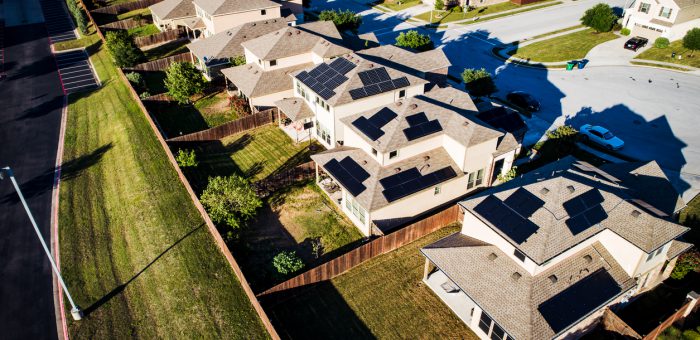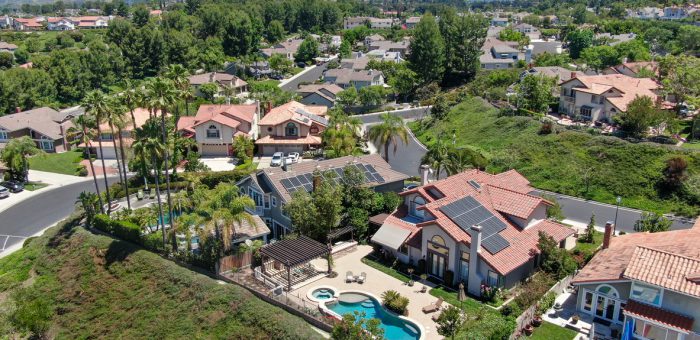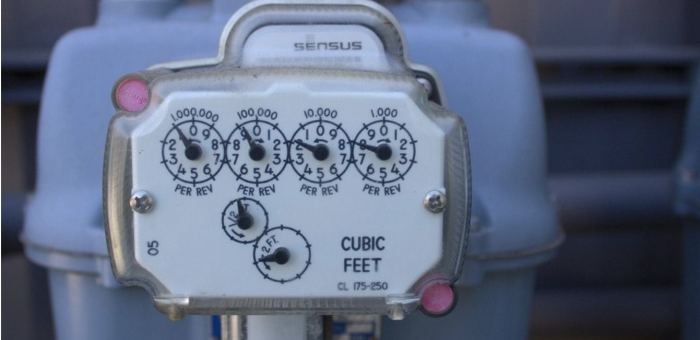Electricity is a fantastic invention that currently plays a crucial role in various aspects of daily living. With dependence on electrical appliances at an all-time high in the modern world, life without electricity, like in a power surge, can be hard to imagine.
You often need a reliable and uninterrupted electricity supply to power different electrical devices in your home. Unfortunately, power surges sometimes occur that tend to disrupt the electricity supply.
Without the proper protective measures, electrical surges can also damage valuable devices. Below is an overview of power surge causes, how to test for them, and preventative measures for your home.
What are power surges?
A power surge is a sudden and abnormal brief rise in electricity supply. The rise can be a transient wave of current, power, or voltage in an electric circuit. There is often an oversupply of electric current from the power source, such as a generator or a mains supply that lasts for a few microseconds.
Although surges last for a short time, they differ in magnitude depending on their cause. The spike can vary from a barely noticeable small-scale rise in voltage to a large-scale catastrophic jump in electricity supply. Two main types of surges occur based on the voltages involved and the power supply.
Internal power surges essentially arise from causes within residential or commercial buildings. The electric surges can occur when internal sources — like motors in industries — start-up and shut down. The sudden switch in power causes high electric currents to flow and reroute some power to and from other devices linked to the circuit. Air conditioners and power carpentry are possible causes of power surges in your home.
External power surges tend to arise and occur outside your premises. Environmental causes like lightning striking utility equipment or swaying tree branches that cause electric lines to touch and short-circuit are common causes. An external electric surge can also occur when you regain electricity after a power outage.
How do these power surges affect electricity?
When power surges occur, the brief spikes can attain amplitudes as high as tens of thousands of volts. Typical electrical devices and household appliances can handle voltage levels between 110V and 220V in most countries. Electrical outlets in the United States averagely, operate on 120V. Utility companies must supply electricity not less or more than 5% of this nominal voltage.
These overvoltage disturbances can damage, degrade, or destroy electrical devices within a home or manufacturing plant. Low-grade power surges often don’t cause instant property damage like melting electrical parts or blowing fuses. However, they do promote the gradual degradation of electronic components until they completely stop working.
These more significant, sudden jumps in power cause instantaneous blowing of semiconductors, capacitors, fuses, and resistors. Power surges effectively end up shortening the lifespan of electrical devices.
Common causes of power surges
A few of the most common causes include:
Severe weather or a lightning strike and power surges
Severe weather, such as thunderstorms, snowstorms, and heatwaves, can cause power surges. Strong winds can fling branches, cause tree limbs to sway against high voltage power lines, and disrupt the current flow. Wild animals like squirrels, monkeys, birds, and snakes can also cause power surges when they fall onto electric lines during extreme weather.
Lightning strikes are a common cause of fires, large-scale power surges, and blackouts. The electric current from a lightning strike can enter your power supply through satellite dish TV cables, electric service lines, or incoming telephone wires.
Electrical appliances that are unprotected, directly plugged into an electric socket, or hard wired into the main electric panel are at risk of being damaged during lightning storms. Even appliances that are switched off but still plugged in can meet a similar fate.
Overload of electrical power and power surges
An electric power overload can occur when you draw an excessive amount of electricity into a single circuit. Overloads may occur after overwhelming an extension cord by plugging too many electrical devices into the unit.
Electric surges tend to happen after power overloads when the overused circuit receives a massive current boost. A subsequent brief spike in voltage occurs, resulting in a power surge.
Spike in normal operating voltage for appliances
Spikes may occur in residential and commercial buildings when electric devices consume more electricity than expected, disrupting the circuit. Hairdryers, refrigerators, and blenders can cause sudden spikes in electric current use at home. Multiple air conditioning units and elevators can momentarily fluctuate power use in commercial space and cause power surges.
Faulty electrical wiring
Exposed or damaged electric wiring is a common cause of power surges. Although you may be unable to detect faulty electric wiring behind walls, there are a few warning signs you may notice. These signs include burn marks on electric outlets, buzzing from power ports, the smell of burning rubber from wiring, and frequently tripping circuit breakers.
[ctafirst]
Measures to prevent internal surges
There are a few other measures you can take to protect your home.
Invest in surge protectors or power strips
Surge protection devices can help safeguard your valuable electric devices against unexpected surges. When the electric voltage spikes above an acceptable level, the device reroutes the excess electricity to the power outlet’s grounding wires. There are different types of surge protection devices that you can use.
Whole house or point-of-entry surge protectors are installed in the main power panel to redirect external electric instabilities to the ground. You can combine it with a backup surge protector that continues to supply electricity to connected devices during power blackouts.
Most people may be more familiar with the surge suppressor power strip or surge protector. After plugging this surge protector into a power outlet, you can proceed to connect different appliances to the power strip’s outlet.
Unfortunately, not all power strips have inbuilt surge protection. Power strips are still worthy investments that can help improve your home’s energy efficiency use. They cut off electricity supply to devices you aren’t using and effectively lower energy loss to phantom loads or during standby mode.
Besides saving you from costly repairs after electric surges, surge protectors also lower your electricity bill. You can also use your surge protector to test power outlets for electric surges.
First, plug the protector into the wall socket without adding any electric device. Proceed to assess the protector at regular intervals to check if the circuit is tripped. You can plug in an electric appliance during periodic checks to see if it receives a current flow. If the appliance doesn’t work, then a power surge tripped the circuit breaker.
Avoid overloading outlets with excessive electrical loads
Unplugging devices that aren’t in use during extreme weather and power outages is one of the easiest ways to prevent surges. Distributing electrical appliances amongst your extension cords and power strips can avoid overloading your power outlets.
These simple yet effective surge preventive measures can help you avoid unnecessary expenses on repairing or replacing costly devices.
Protect yourself from an electrical overload
After a power surge, reset the circuit breaker on your surge protector and assess your home for possible damage. You want to be cautious of electric faults arising from power surges that can cause accidental electric fires.
More From the Power Wizard Blog
-
Affordable Electric Bill: Power Wizard’s Promise of Protection
Sarah, a proud Texan, knows that everything is bigger in Texas – including the choices when it comes to electricity providers. She’s no stranger to the complexities of deregulated energy markets. With a bustling household, she juggles work, family, and keeping the lights on. But there’s one thing Sarah doesn’t want to juggle: her electric bill. […]
View Article -
Vampire Energy: How Phantom Power Drains Your Wallet and the Environment
Imagine your home filled with silent energy sippers, lurking in the shadows, unnoticed yet constantly draining power and your wallet. Vampire energy, or phantom load, refers to the electricity electronic devices consume, even when turned off or in standby mode. These energy vampires are prevalent in every household and workplace, from the charger left plugged […]
View Article -
Do Solar Panels Increase Home Value?
The United States now has more than 6,000 people who work in the solar power industry and help us enjoy the benefits of this amazing technology. As solar panels become more and more common, some people are wondering, “Do solar panels increase home value estimates?” The truth is that solar panels can provide a long list of […]
View Article -
What Is Net Metering and How Does It Work?
A staggering 1300% increase. That’s how much the number of electric customers engaging in net metering skyrocketed from 2010 to 2020. But what is behind this surge? What exactly is net metering, and how could it potentially change the way you view your electricity consumption? The journey from an ordinary consumer to a potentially profitable one […]
View Article -
The Top Sources of Carbon Emissions in the U.S.
Climate change due to rising global temperature seriously threatens the natural ecosystem. It can result in erratic weather featuring intense drought, heat waves, melting ice caps, warming oceans, and increased storms when left unchecked. As the impact of climate change worsens, the risk of biodiversity loss and human extinction gets bigger. Table of Contents What […]
View Article -
California Solar Tax Credit & Incentives for Residential Rooftop Solar
Are you considering investing in residential solar panels in California? You’re not the only one. Research shows that California was ranked number one out of 50 states in 2022 for solar power generation, with more than 11 million homes powered by the sun. A major reason why solar power is popular statewide is that prices have dropped […]
View Article -
What Should You Include in an Energy Efficiency Audit?
Rising energy costs mean higher electricity bills, and for the average homeowner or business, a little savings each month can add up to extra cash at the end of the year. If you’re looking for ways to reduce your home’s energy consumption, performing a home energy audit is a great place to start. Table of […]
View Article -
How to Cancel Your Electricity Contract with Your Provider
There are many advantages to changing your electrical service, including finding a better price, switching to a company with better customer service, and finding a distributor with a green appeal. It’s easiest to end your service when a contract ends, but sometimes it makes sense to switch early. For instance, you may find that you’re […]
View Article













